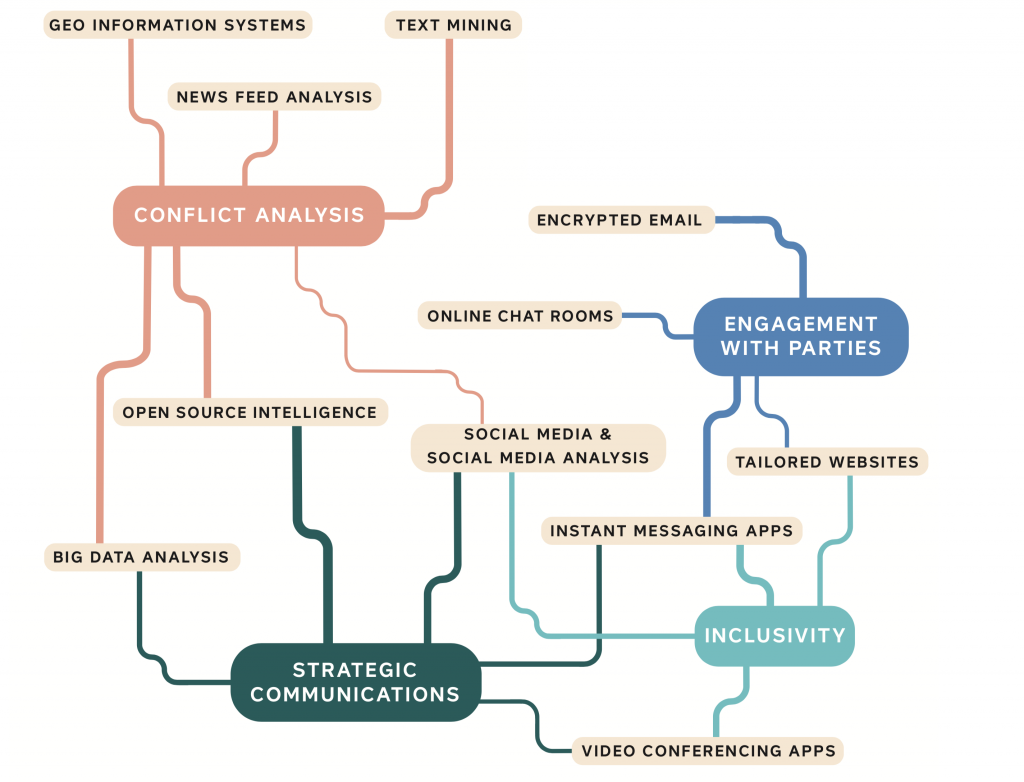CMI invests in digital peacemaking
Digital technologies offer many opportunities for peace mediation and make it possible to include more voices in peace processes. But peace mediation had not explored the full potential of digital solutions before the Covid-19 pandemic, which accelerated the digitalisation of the field. In 2020, building on its experience with digital tools, CMI decided to launch a Digital peacemaking project.

Digital technologies impact every aspect of our lives, and the global pandemic has only hastened their adoption. However, until recently, peace mediation has been relatively conservative when it comes to using such technologies. Many considered face-toface interaction as the only way to develop trust with conflict stakeholders, and digital tools as essentially too risky for sensitive processes, as they could affect their confidentiality.
CMI has spearheaded the use of digital technologies to address conflicts since as far back as 2004. “The tradition of using digital technologies at CMI stems from the strong interest of our founder, President Martti Ahtisaari, in digital technologies,” says Senior Project Manager Jonathan Harlander, who leads CMI’s Digital peacemaking project.
In 2020, building on more than 15 years of experience with such tools, CMI identified digital peacemaking as an institutional priority and launched a project of the same name.
Digital peacemaking at CMI
Digital tools can be used in peace mediation variously. They can be used, inter alia, to better understand conflict, to render peace processes more inclusive, and to increase the security of exchanges between participants.
While these tools offer great opportunities for peace mediation, they have nevertheless also become a vehicle for hate speech, cyber-attacks and other actions undermining peace.
CMI’s digital peacemaking team aims to leverage the full potential of digital technologies to improve the practice of mediation but also to mitigate their use to fuel conflict and jeopardise peace processes.
Harlander says that one of the guiding principles for the project is collaboration: “We work very closely with our teams and aim to respond to concrete, practical needs expressed by mediation actors, rather than imposing solutions. This is a collaborative effort to identify and integrate digital solutions.”
Digital tools make it possible to include more voices
Virtual events have made it easier to increase the inclusivity of dialogue processes. But not everyone has access to the internet because of the limited network coverage and bandwidth in certain regions, plus the cost of electronic devices and data.
To address the latter challenge, CMI has commissioned the development of a dashboard that allows projects to gift airtime to conflict stakeholders. As a result, the organisation now has the capacity to sponsor the participation of individuals in online meetings without them
having to pay for the mobile data needed.
“As a mediator, I think it’s important to be able to address that particular issue and contribute to the inclusivity of a process”, Harlander says.
Digital tools can make it possible to include more voices in a peace process, including by increasing numbers of participants, and reducing the risk of physical harm for them, or by overcoming logistical challenges that prevent some from participating.
“In some cases you are able to engage actors who would not have been able to participate face to face for security, political, or cultural reasons”, Harlander says.
“There’s a momentum that has resulted from the pandemic”
The Covid-19 pandemic has provided additional motivation for the mediation field to explore digital tools. But the unexpected and rapid shift to the digital realm has also raised questions about the safety of these new tools and platforms.
“As peacemakers, we need to exercise due diligence to ensure that both the digital infrastructure and the tools being used are safe”, Harlander points out. “And it’s also important to be transparent with the conflict stakeholders we work with, in terms of what tools are being used, as well as the measures in place in order to guarantee the safety of communications and of data in particular.”
Looking back a year from now, there has been an exponential adoption of digital tools and a more open attitude towards exploring new ways of using digital technologies.
“I think there’s a momentum that has resulted from the pandemic, in terms of adopting digital technologies. It’s also a significant opportunity, and I believe some of these technologies are here to stay.
“The same way you have expertise in national dialogue, or constitutional processes, I think that digital peacemaking might become an expertise that will be needed in any type of dialogue.”
This article was published in our Annual Report 2020.